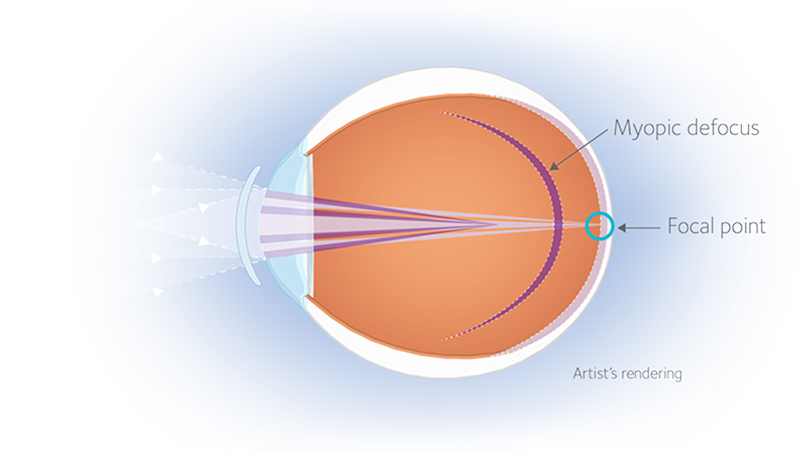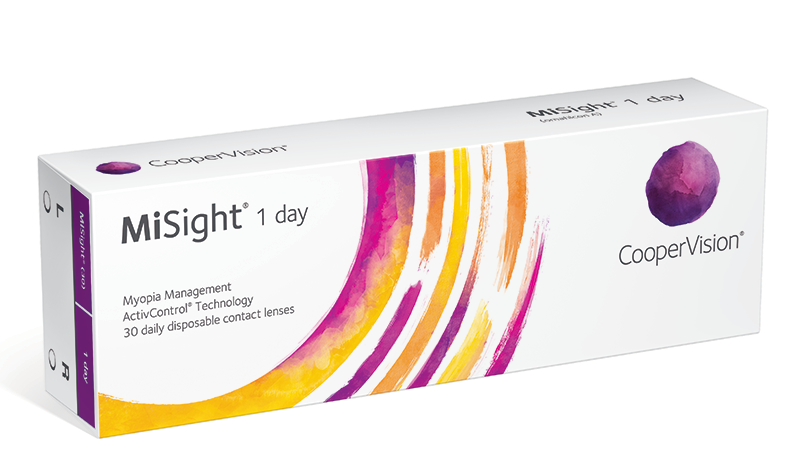Special contact lens technology for children that corrects their vision while slowing the progression of short-sightedness by 59%, on average.*1

For illustrative purposes only
Is your child struggling to see the board at school or the television at home? Are objects in the distance blurry? If so, one potential cause is short-sightedness – or what eye care professionals call myopia. When your child has myopia, their eyes are often growing too long, and light focuses in front of the retina. This blurs their vision, so they need spectacles or contact lenses to see clearly.
Thanks to ActivControl® Technology, short-sighted children can now enjoy freedom from glasses when wearing their contact lenses and significantly slow the progression of their myopia at the same time.1
Benefits:
MiSight® 1 day soft contact lenses for vision correction and control of the progression of myopia. This product may not be right for you, refer to your optometrist for advice. Read the instructions for use before purchase (https://coopervision.net.au/patient-instruction) and follow the instructions for use.ActivControl® Technology at work.
ActivControl® Technology at work
Where you can find this technology:
* Compared with a single-vision one-day lens over a three-year period.
MiSight® 1 day soft contact lenses for vision correction and control of the progression of myopia. This product may not be right for you, refer to your optometrist for advice. Read the instructions for use before purchase (https://coopervision.net.au/patient-instruction) and follow the instructions for use.
References:
1 Chamberlain P, et al. “A 3-year Randomized Clinical Trial of MiSight® Lenses for Myopia Control.” Optom Vis Sci 2019;96:556–567. Sponsored by Coopervision Inc.









